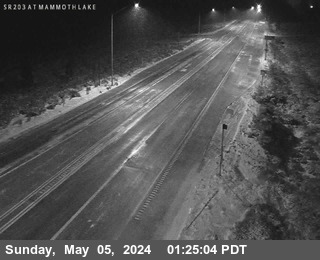Brought to you by Howard Sheckter
Mammoth Weather Outlook
Great Basin Slider will kick up some wind over the crest and down through the Owens Valley….However….The Short…Medium and Longer range is still dry for Central CA…….
Tuesday January 13, 2015
Wednesday:
Changes in the medium range models today and yesterday show a stronger ridge over the North Atlantic. Arctic Air that was proged to spill further west later in the month will now likely spill south, further east. This makes for a warmer west and colder east over the next 15 days. A true +PNA pattern over the west. Upshot to all this is still dry……
———————————————————————————————————————————————————————————————————
After some traveling, its time once again to have a look at the main indices that are driving our Central CA weather. I just had a look at the Mammoth Pass information put out by DWP and it is as bleak as it was last year at this time. We are currently 21% of the normal amount of precipitation to date on Mammoth Pass and some 10% of normal for the entire winter, IE (April 1st)
ENSO:
Some of the drivers that correlate with this winters dry spell is ENSO. The (El Nino-Southern Oscillation) area of most influence is the Nino 3.4 region. It reached briefly just over 1C in December. Today the 13th of January it is under .5C or in a category that is well below the threshold for the positive effects of ENSO for California. The Dweebs would say that overall, the worst ENSO years for Central CA are the ones that are classified as weak El Ninos. Based upon many reports from the Dweebs, they are associated with Split Flow winters. IE the winters that bring coastal sections of CA precipitation and the interior drier than normal conditions. Although this EL Nino has yet to be called by NCEP. Today, the odds are, that it will not reach that criteria. It has faded quickly. However in the longer climatic time frame, Warm ENSO conditions are expected to return again later this spring and Summer and Fall according to the Scripps model.
Another longer time frame induce that has had an effect is the PDO. Pacific Decadal Oscillation became positive last year. The warmer than normal waters along the far eastern pacific supports upper ridging. However, without a strong enough and persistent “Warm” ENSO signal, the benefits of the +PDO were never reached just like during the winter of 76/77.
MJO:
Comparing the track of the MJO through its phase space last fall from the same time frame in 2013, it showed the promise of a change for the upcoming winter. This evidently has turned out to be a false promise. As last fall when the MJO progressed into phases 1, 2, 3 and 4), There was no follow through for the following month. Sure we got snow, but the cycle ended after that with no movement to other favorable phase spaces. Remember that a strong MJO “Modulates the westerlies”
Here is a basic explanation of the MJO. The Madden-Julian Oscillation (MJO) is the major fluctuation in tropical weather on weekly to monthly timescales. The MJO can be characterized as an eastward moving ‘pulse’ of cloud and rainfall near the equator that typically recurs every 30 to 60 days. When the MJO is strong, (lots of Thunderstorms), and is located in the Indian ocean, it causes the PNA to flip negative and we often get a long wave trof over the eastern pacific. (Lots of rain in California) When this cluster moves east to the western pacific we ridge up as the East Asian jet retracts. This is what is going on now. If the MJO progresses east to the Date Line and remains strong, phase 7 to 8, the EAJ often times splits and under cuts the Eastern Pac Ridge and we get tropical connections or AR events in CA.
So far this year, signs are less encouraging. And is becoming more clear that for the next two weeks, the MJO currently strong in phase 6, will weaken rapidly into Phase 7. This effectively “Takes the foot off the pedal” of the East Asian Jet causing both retraction of the upper jet as it weakens over the eastern pacific and at the same time, allows for amplification of the eastern pacific ridge and some retrogression of the same. Remember that the eastern pacific ridge is normally the persistent feature in the eastern pacific, hence the term eastern pacific ridge. It is only when the extension of the EAJ occurs that the ridge gets flattened and precipitation moves on west coast. Of course retrogression of the Eastern Pacific Ridge to a position north of Hawaii is often the other way we get pacific storms. I think that the absence or the displacement of critical teleconnections are responsible for the absence of the North of Hawaii Eastern Pacific Ridge the past several years.
The upshot of all this, is that later this month there is a good possibility for the return of cold arctic air into the US with the possibility of some of that spilling west, similar to what we had around Christmas/New Years. Over all this is still as dry pattern for Central CA, (Unless one of these systems backs up west, far enough for the upper jet to become over water. We saw this over Christmas Eve when snow fell in Las Vegas and San Diego County. We also had a lot of the snow stripped from the peaks of the Sierra due to strong NNE winds. For Mammoth to benefit from this type of pattern snowfall wise, the center of the upper low if it forms, would need to back up well north of us, like Tahoe or Grass Valley, Ca.
SOLAR:
The Sun is in a funk. Some scientists say that we are in a solar hibernation. This much weaker than normal sun spot cycle has peaked. The next phase will be the slide to the trof of the cycle over the next 5 to 6+ years. If history repeats itself, we do much better on the down side of the cycle, meaning that we have wetter winters on the back side of the cycle.
On a bright note; Mammoth Mountain has done a fabulous job with a combination of Snow making and natural Snow. With colder temperatures on the way later this month, Mammoth Mountain will be able to increase its coverage on a larger scale if warranted.
And……Looking down the road, even during our driest winters, the vast majority come back during February and March…..
Forecast:
In the meantime, there was hope that we would be in for a mini wet spell later this weekend and into the following week. The extended models have been back peddling on this notion. IE the upper ridge now building into CA will flatten Friday into Sunday. The upper jet will return to the Pacific NW to bring wet weather to that region for a short while. Looking at the guidance for the end of this week, both EC and GFS show the upper jet well into the pacific NW with 500MB heights above Mammoth about 576DM. This means that there is little if any chance of precipitation the end of this week and into early next week. Thus we go back to the all too familiar Ridge-Trof pattern like the past three winters… Then retrogression later next week will bring the opportunity of some colder air back into the Mammoth Area. Currently, there is a cold dry system progged for the (21st). Then….the end of the last week of January looks favorable for a weather system as well.
Dr Howard and the Dweebs…………………..:-)




